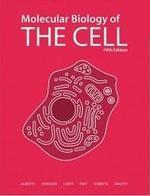Table of Contents
Special Features
List of Topics
Acknowledgments
A Note to the Reader
Pt. I Introduction to the Cell
1 Cells and Genomes 3
2 Cell Chemistry and Biosynthesis 47
3 Proteins 129
Pt. II Basic Genetic Mechanisms
4 DNA and Chromosomes 191
5 DNA Replication, Repair, and Recombination 235
6 How Cells Read the Genome: From DNA to Protein 299
7 Control of Gene Expression 375
Pt. III Methods
8 Manipulating Proteins, DNA, and RNA 469
9 Visualizing Cells 547
Pt. IV Internal Organization of the Cell
10 Membrane Structure 583
11 Membrane Transport of Small Molecules and the Electrical Properties of Membranes 615
12 Intracellular Compartments and Protein Sorting 659
13 Intracellular Vesicular Traffic 711
14 Energy Conversion: Mitochondria and Chloroplasts 767
15 Cell Communication 831
16 The Cytoskeleton 907
17 The Cell Cycle and Programmed Cell Death 983
18 The Mechanics of Cell Division 1027
Pt. V Cells in their Social Context
19 Cell Junctions, Cell Adhesion, and the Extracellular Matrix 1065
20 Germ Cells and Fertilization 1127
21 Development of Multicellular Organisms 1157
22 Histology: The Lives and Deaths of Cells in Tissues 1259
23 Cancer 1313
24 The Adaptive Immune System 1363
25 Pathogens, Infection, and Innate Immunity 1423
Glossary
Index
Tables: The Genetic Code, Amino Acids
Read an Excerpt
Chapter 1: The Evolution of the Cell
All living creatures are made of cells-small membrane-bounded compartments filled with a
concentrated aqueous solution of chemicals. The simplest forms of life are solitary cells that
propagate by dividing in two. Higher organisms, such as ourselves, are like cellular cities in
which groups of cells perform specialized functions and are linked by intricate systems of
communication. Cells occupy a halfway point in the scale of biological complexity. We study them to
learn, on the one hand, how they are made from molecules and, on the other, how they cooperate to
make an organism as complex as a human being.
All organisms, and all of the cells that constitute them, are believed to have descended from a
common ancestor cell through evolution by natural selection. This involves two essential processes:
(1) the occurrence of random variation in the genetic information passed from an individual to its
descendants and (2) selection in favor of genetic information that helps its possessors to survive
and propagate. Evolution is the central principle of biology, helping us to make sense of the
bewildering variety in the living world.
This chapter, like the book as a whole, is concerned with the progression from molecules to
multicellular organisms. It discusses the evolution of the cell, first as a living unit constructed
from smaller parts and then as a building block for larger structures. Through evolution, we
introduce the cell components and activities that are to be treated in detail, in broadly similar
sequence, in the chapters that follow. Beginning with the origins of the first cell on earth, we
consider how the properties of certaintypes of large molecules allow hereditary information to be
transmitted and expressed and permit evolution to occur. Enclosed in a membrane, these molecules
provide the essentials of a self-replicating cell. Following this, we describe the major transition
that occurred in the course of evolution, from small bacteriumlike cells to much larger and more
complex cells such as are found in present-day plants and animals. Lastly, we suggest ways in which
single free-living cells might have given rise to large multicellular organisms, becoming
specialized and cooperating in the formation of such intricate organs as the brain.
Clearly, there are dangers in introducing the cell through its evolution: the large gaps in our
knowledge can be filled only by speculations that are liable to be wrong in many details. We cannot


